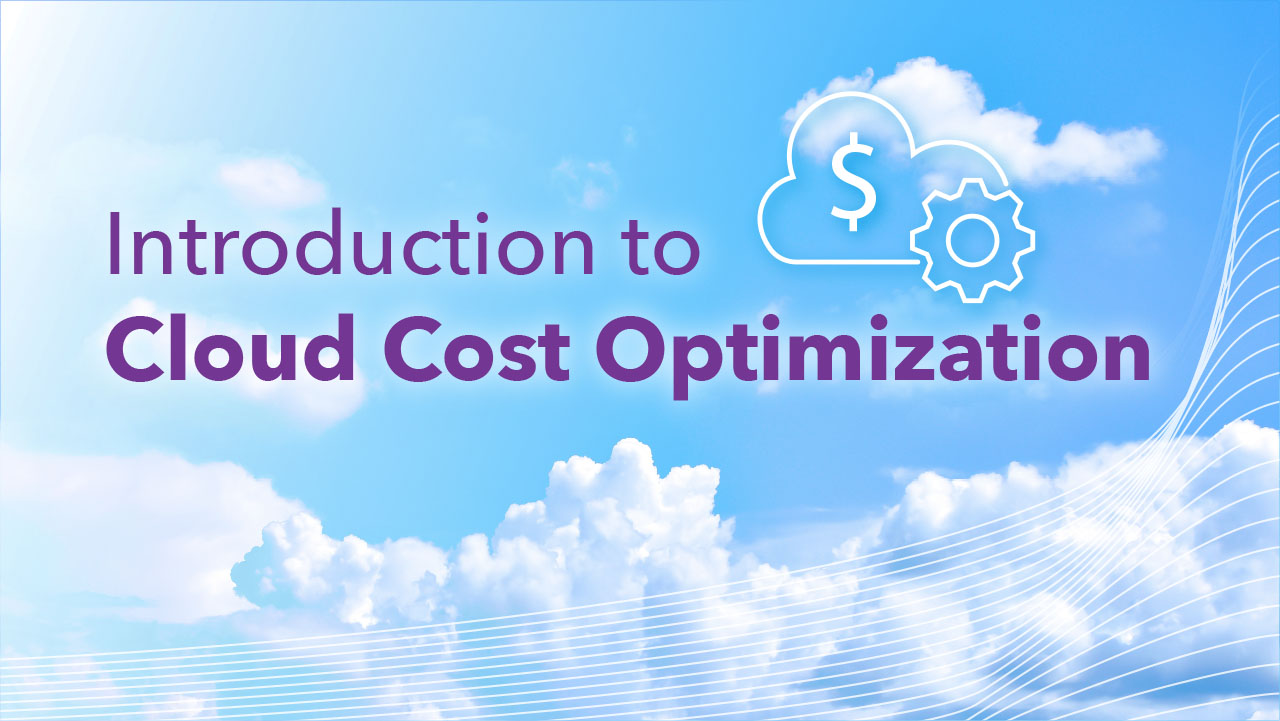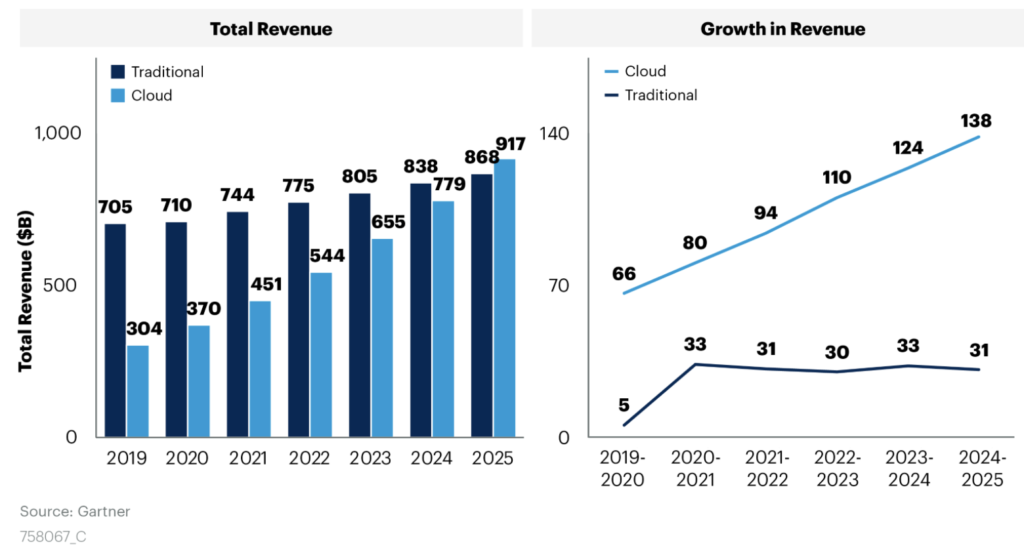
Application performance and efficiency can help reduce your cloud bill
The promise of the cloud beckons: Bring your applications and host them here. The siren song of AWS, GCP and Azure is sweet, and the benefits are proven:
- Resourcing: Take the burden of infrastructure maintenance and data science off your teams, and let your cloud hosting provider handle it so your teams can improve applications for your customers
- Elasticity: Leverage “pay-as-you-go” pricing to only pay for what you use
- Availability: Let your cloud hosting provider handle redundancy and disaster recovery to protect against downtime or application degradation
- Automation: Apply rigor to provisioning resources and other operations to reduce the risk of human error and add efficiencies
- Relevance: Use cloud resources to build new and innovative applications, rather than lifting and shifting existing applications to cloud hosting platforms
- Cloud-native: Break the monolith into microservices-based applications with containers, Kubernetes, and cloud services to slash development and maintenance costs while enabling a more flexible infrastructure
CIOs, CTOs and other technology leaders are heeding the call, moving their businesses to the cloud in astounding numbers. While spending on data centers has remained flat, cloud spending has soared since 2015. Revenue growth is equally startling, as Gartner projects cloud revenues to outpace traditional revenue growth by more than $100 billion.

Gartner, February 2022
Moving to the cloud with the best intentions
In answering why cloud cost is important, the question facing organizations isn’t so much whether to move to the cloud but how to move to the cloud. Depending on available resources, cash, and urgency, you have several options for how to move your applications. Here are a few options:
- Rehost: Lift and shift your applications to a cloud infrastructure as a service (IaaS) without changing them so the same applications run in a new place
- Refactor: Update the application code for a platform as a service (PaaS) model
- Rearchitect: Change the application code to be cloud-native, hosted in the cloud and using cloud resources
- Rebuild: Completely replace applications with new SaaS versions
A recent survey has indicated that 77% of enterprises have been ‘surprised’ by incidents in which costs suddenly spiked. More than a third of these respondents were unable to detect a surge for days, incurring extra costs of as much as $100,000 and driving up their cloud budgets by 10% or more.”
Gartner, 3 Techniques for Building Cost Resilience Into Your Cloud, December 2021
However companies choose to migrate to the cloud, they are doing it in droves, as global cloud spend is predicted to reach nearly $500 billion in 2022. As they move to the cloud, companies are reporting all the benefits they have been promised in agility and resilience. Maybe more importantly, they are able to turn their focus from mundane operations back to innovation and customer satisfaction.
So we’re done here, right? Well….
Introducing the Cloud Paradox
Typically organizations start using the cloud incrementally by rehosting applications in the cloud or updating some application components and moving them to the cloud. Once they see the initial benefits in flexibility and infrastructure cost savings, they naturally want to take full advantage of cloud resources. So they duplicate efforts and try to increase those benefits over time. But a funny thing happens when they take their eyes off the ball and stop watching the numbers so carefully.
Rushing in without a plan, they use no monitoring and no self-imposed limits on usage. Costs creep up. By the time teams become aware, costs can spiral out of control.
“A recent survey has indicated that 77% of enterprises have been ‘surprised’ by incidents in which costs suddenly spiked,” reports Gartner in 3 Techniques for Building Cost Resilience Into Your Cloud, December 2021. “More than a third of these respondents were unable to detect a surge for days, incurring extra costs of as much as $100,000 and driving up their cloud budgets by 10% or more.”
The cost is more than just money. Gartner continues, “Like a data center outage, these spirals not only cost money, they disrupt the business.”
Getting costs back down without losing the benefits of moving to the cloud is a huge challenge. So what exactly causes these tremendous cost overruns?
“Organizations with little or no cloud cost optimization plans rush into cloud technology investments. They end up overspending on cloud services by up to 70 percent without deriving the expected value from it.”
Gartner Finance Research Team, Realize Cost Savings After Migrating to the Cloud, April 28, 2021
Every case is different; but effective, efficient use of cloud resources starts with planning and continues with discipline and execution.
Plan Now for Cloud Cost Optimization
Making a plan for cloud optimization now pays significant dividends later in the form of more predictable balance sheets and increased ability to attain value. As the Gartner Finance Research Team wrote in Realize Cost Savings After Migrating to the Cloud released on April 28, 2021, “Organizations with little or no cloud cost optimization plans rush into cloud technology investments. They end up overspending on cloud services by up to 70 percent without deriving the expected value from it.”
Those initial performance and economic benefits are fool’s gold unless you can make them sustainable, so have a plan for how you’re going to succeed in the cloud.
You may be operating on slim margins, but companies like AWS, GCP, Azure, Alibaba, and IBM are not. In fact, they are enjoying 30% margins, which is why if you’re operating at scale, the cost of cloud can at least double your infrastructure bill. According to the 2021 Andreessen Horowitz study The Cost of Cloud, a Trillion Dollar Paradox, across the 50 top public software companies, $100 billion of market value is being lost due to cloud impact on margins. Across all public software companies, the figure is an estimated $500 billion.
Know Why You’re Migrating to the Cloud
Most companies move to the cloud for the agility and flexibility it offers, and they’re willing to pay a little more to avoid managing operations so tightly.
Others pursue cost savings by closing expensive data centers. A large data center costs $10-25 million a year to operate, according to Steam Data Centers. A global enterprise might have $150 million sunk into annual data center costs, plus rent.
Still others seek application availability. The cost of data center downtime can exceed $500,000 an hour.
Another driver is application performance, augmented by the cloud’s ability to load-balance and take advantage of its seemingly endless resources. Whatever drives you to the cloud should also guide your holistic cloud strategy, including application performance requirements and acceptable costs to achieve your goals.
Find the Solutions That Fit Your Pains
If you are paying too much for your cloud services or are not getting the return on your investment, there is no single solution that will solve every issue.
Depending on your challenges, you can apply a common solution:
- Monitor: Apply monitoring tools to watch your cloud environment for usage that exceeds acceptable limits. Consider using an alerting tool as well to kickstart remediation actions.
- Pause or consolidate idle processes: Apply the brakes to processes that aren’t running but are still holding data that your cloud service is charging for. Consolidate multiple processes to use the same data to lower costs.
- Use reserved and spot instances: Reserve multi-year deals with cloud providers, which are less expensive than shorter-term contracts. Use spot instances that are not guaranteed but are less expensive if available.
- Multi-cloud: Use more than one cloud service to compare costs and find the least expensive services. Use cloud vendor competition to gain leverage in contract negotiations.
- Tagging: Tag cloud resources to keep them better organized so you can track their spend and performance.
- Culture: Make everyone from the CFO to development teams aware of the benefits of cloud cost optimization. Educate employees, reward good behavior, gamify cloud spend, and do whatever it takes to achieve results. Andreessen Horowitz recommends making cloud cost optimization a top-line KPI.
- Right-size your resources: Assess how much storage and compute resources you really need, since they are the two primary drivers of cloud cost. Make sure you’re using the right type of compute instance for services you’re running.
- Optimize your Java runtime: Leverage a superior Java platform that can boost the performance and scalability of your Java ecosystem. An optimized runtime maximizes performance while improving efficiency to drive down infrastructure costs. Java is the backbone of most websites and applications, and the “Write Once, Run Anywhere” design makes it ideal in virtually every environment.
Learn More About the Cloud Paradox
The Cloud Paradox is real, but there are ways around it. For Java-based applications, you need a partner you can trust. It can feel like there’s a catch-22 everywhere you look: spend for cloud infrastructure or lose application performance, warm up applications quickly and limit their performance, run applications quickly but risk Garbage Collection pauses.
Java can – and in most cases should – run in the cloud. If you’re migrating to the cloud for the first time, a partner like Azul can help you navigate the risks and take advantage of the functionality the cloud can offer. Azul Platform Prime leverages cloud-native technology and processes to deliver more speed, efficiency, and scalability, and is an important tool in your cloud cost-optimization arsenal. Visit Azul.com and learn more about Azul Platform Prime.
To help answer why cloud cost is important, read the new eBook, The Cloud Paradox: Today’s Growth Is Tomorrow’s Runaway Cost




